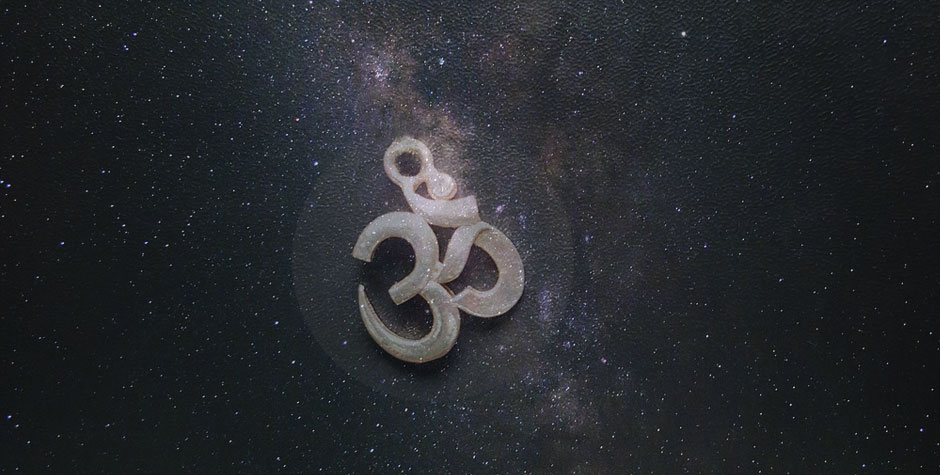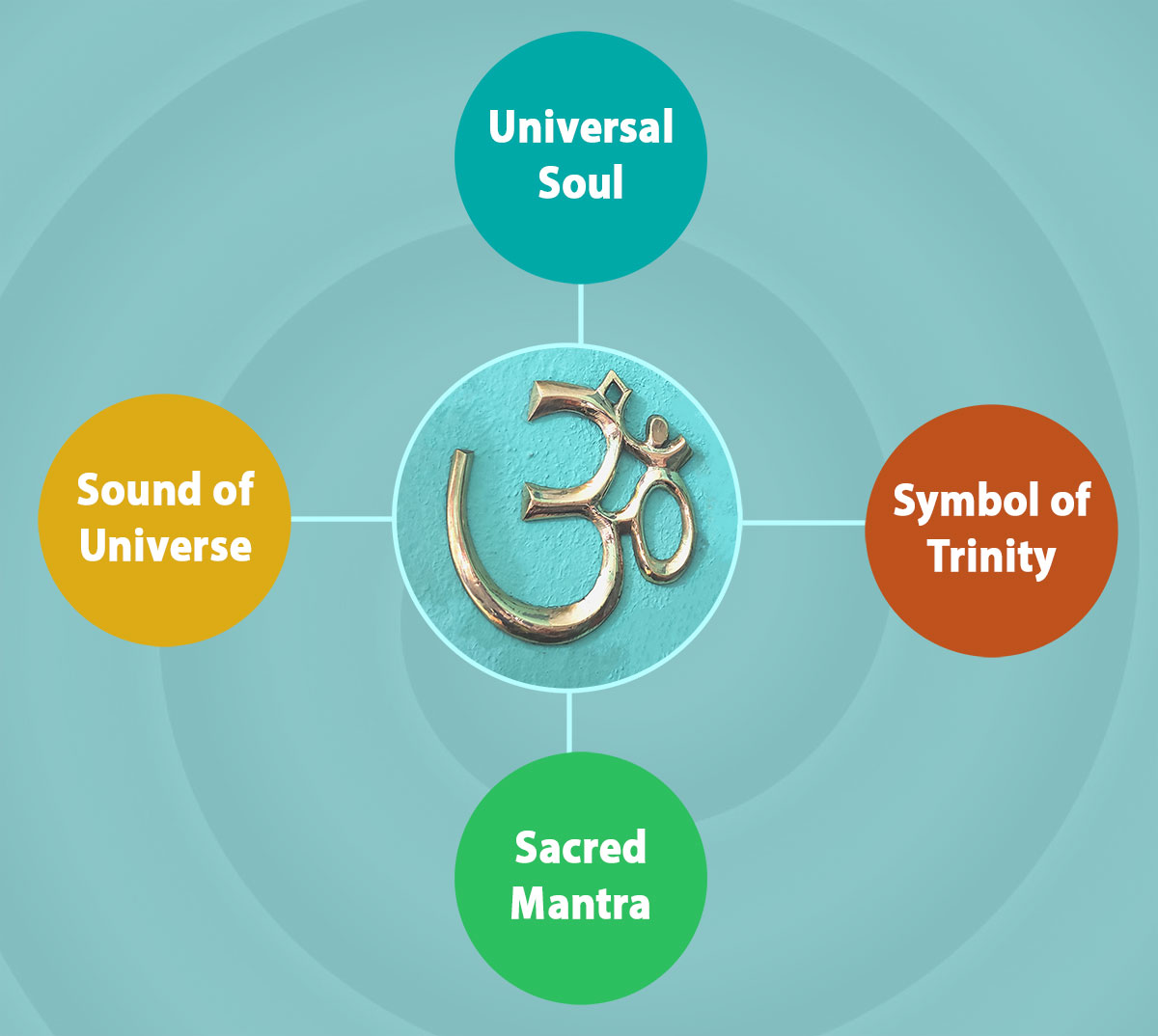Om Symbol Unveiled: What is the Meaning of this Mantra in Buddhism & Other Cultures
Last Updated: January 1, 2026
Tweet
What is Inside?
Om, aum or ॐ in Sanskrit is a syllable used in several religions such as Hinduism, Buddhism, Jainism, Sikhism and Brahmanism. It is also known as udgitha or pranava mantra ("primordial mantra," the word prāṇa meaning "vital vibration"). In Hinduism, this syllable is considered the original sound from which the Universe was born. She is mentioned in some upaniṣads, notably the Chāndogya Upaniṣad.
The syllable Om comes from the combination of the Sanskrit phonemes A, U and M, which respectively represent the beginning, the continuation and the end of all that exists. It also symbolizes the Hindu trinity composed of the creator gods, Brahmā, the life, Vishnu and the destroyer of evil, lord Shiva. The pronunciation of Om is often described as a sound that emerges from the throat, rolls down the tongue and ends on the lips, symbolizing waking, dreaming and sleeping. It is considered to be the sound of the Universe and is considered to be Brahman in Sanskrit.
If you are an enthusiast about Om Symbol and Buddhism, here you will also find the answer to your quest on how to join a monastery.Origins of Om
Om (or Aum ॐ) is a sacred symbol in Hinduism, used as a prefix or suffix to mantras. It represents the primal divine vibration of the Universe, symbolizing all existence. The Pranava Upanishad explains its symbolism, and Tantrism emphasizes its importance. Vasugupta's Spanda-kârikâ recognizes vibration as a manifestation of consciousness, linked to the unconscious. Encountering a manifestation may cause a tremor (kshoba), showing Om's profound impact.
Please click here to get the complete details on available programs, activities, duration, cost, benefits and the rest of it.
Get More Info Now »
In Buddhism, particularly Mahāyāna Buddhism, the influence of Hinduism led to the significant adoption of Om, originally absent from Indian Buddhism. It found its place as a prefix or suffix to mantras, notably in the mantra Om mani padme hum. In the Tibetan tradition, “Om” became intertwined with meditation practices, alongside mindfulness and stillness. This transformation illustrates the dynamic interplay of religious traditions in shaping spiritual practices across cultures.
Om, or Aum, transcends its Hindu origins to find relevance in other faiths. In Jainism, it serves as a liberating mantra, used to praise Tirthankaras, acharyas, and ascetic monks. Sikhism, inspired by Vedas, equates Omkara with God, referred to as Oankar. Guru Nanak, the faith's founder, incorporated it into Sikh inner prayer. Across these diverse religious traditions, Om remains a symbol of profound spiritual significance, bridging the boundaries between faiths and cultures.
History of Om
The OM symbol finds its roots in the ancient cultures of Buddhism and Hinduism. According to Hindu scriptures, the creation of the cosmos and the universe originated from a vibrational sound, with its primal sounds represented by A-U-M. Written evidence of this syllable's significance dates back to 1500 to 2000 BC in the Vedas, ancient Sanskrit Vedic texts. Furthermore, it appears in later codified texts such as the Yoga Sutra. Yogic teachings emphasize that the repetition of the OM mantra establishes connections with divine origins, offering a profound spiritual practice.
Spiritual Meaning of Om

The "A," situated in the lower part of the "3" curve within the Om symbol, signifies the awakened state, known as Vaishvanara. It denotes the condition in which an individual orients themselves outward, toward others. Additionally, it symbolizes the state of exploration that follows birth and encompasses the conscious facet of our psyche. This element is closely associated with the root and sacral chakras, forming the foundational aspects of creation and life at the primary level.
Please click here to get the complete details on available programs, activities, duration, cost, benefits and the rest of it.
Get More Info Now »
The "M," represented by the curve on the right, serves as the emblem of deep sleep and the realm of the psychic unconscious. It is linked to Prajna, the innermost essence of one's self, embodying the purest form of one's being. It signifies both the conclusion of one phase and the inception of another, embodying aspects of both destruction and birth. This aspect finds its connection to the crown and third-eye chakras, which are intertwined with higher consciousness and spirituality.
Significance of Om Symbol
The AUM symbol represents the universe, including past, present, and future. It embodies the divine vibrations that created the universe and is infused with powerful energies. It is the source of life and existence. In Hindu and Buddhist cultures, it is highly sacred.
The OM symbol is common in everyday life and represents spiritual perfection in Hindu and Buddhist spirituality. People wear it as jewelry or decorate their homes with it. Temples and spiritual sanctuaries display paintings of the symbol. A traditional ritual involves inscribing it on a newborn's tongue with honey as a blessing, emphasizing its spiritual importance.
Om Symbol in Hinduism and Buddhism
Certain bells, like those used in Buddhism, are meticulously designed to produce the resonant chords of the Om sound. Repeating the Om mantra multiple times at the correct pitch allows individuals to establish a profound connection with the Universe. The more it is repeated, the more it stirs the soul and soothes the heart. Om possesses an almost magical ability to usher individuals into a state of profound well-being.
The effects of the Buddhist symbol on the body and the mind are manifold. The pronunciation or chanting of the Om sound yields numerous benefits for both the body and the mind. Om, a sacred syllable in both Hindu and Buddhist traditions, embodies both a sound and a symbol deeply ingrained in the fabric of these civilizations. According to Om, the cycle of life remains infinite, in perpetual motion and evolution, with no end in sight.
Om Symbol in Meditation and Yoga
In yoga, repeating the Om mantra helps focus and calm the mind, reducing stress and anxiety. The vibrations of Om on the 7 chakras bring relaxation and dispel doubt and anxiety. Reciting the mantra restores self-confidence, inner peace, and mental harmony, replacing bad energies with joy and spiritual well-being.
While meditating, chanting Om vibrates the vocal cords and clears the lungs. This vibration affects the rib cage, promoting gas exchange and improving blood and lymphatic circulation. It unclogs sinuses and oxygenates the lungs and organs. Reciting the mantra vibrates the brain and cranial nerves, affecting nerve cells and endocrine glands, promoting hormonal balance.
We hope our information on Om Symbol was helpful to you to get the insights, you might also want to explore more about world's places to learn Buddhism and Buddhist meditation.
Frequently Asked Questions (FAQs)
What does an Om stand for?
Rather than considering Om as some mere alphabetical symbol that stand for something, it would rather be better to realize that Om is a sacred syllable in Hinduism, Buddhism and other spiritual practitioners.
What is om?
Om has different meanings depending on the context and communities. For Hindus Om is a Sacred Mantra while in Buddhism Om is about Compassion and Connection.
What does Om mean spiritually?
Om symbol has spiritual significance as the believers regard it as universal sound, energizer of chakras and a medium for spiritual connection.
Also explore about: Unalome the Buddhist Symbol
Please click here to get the complete details on available programs, activities, duration, cost, benefits and the rest of it.
Get More Info Now »


